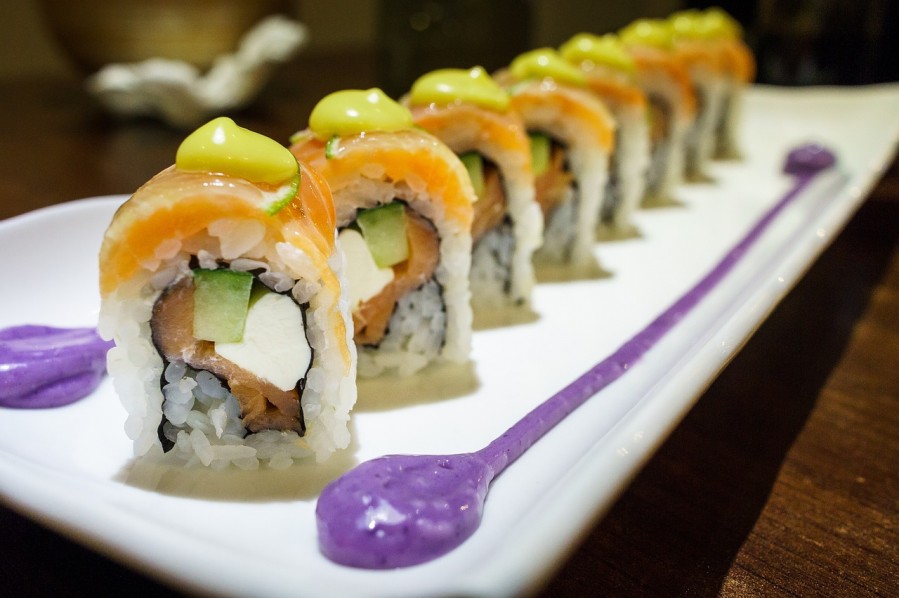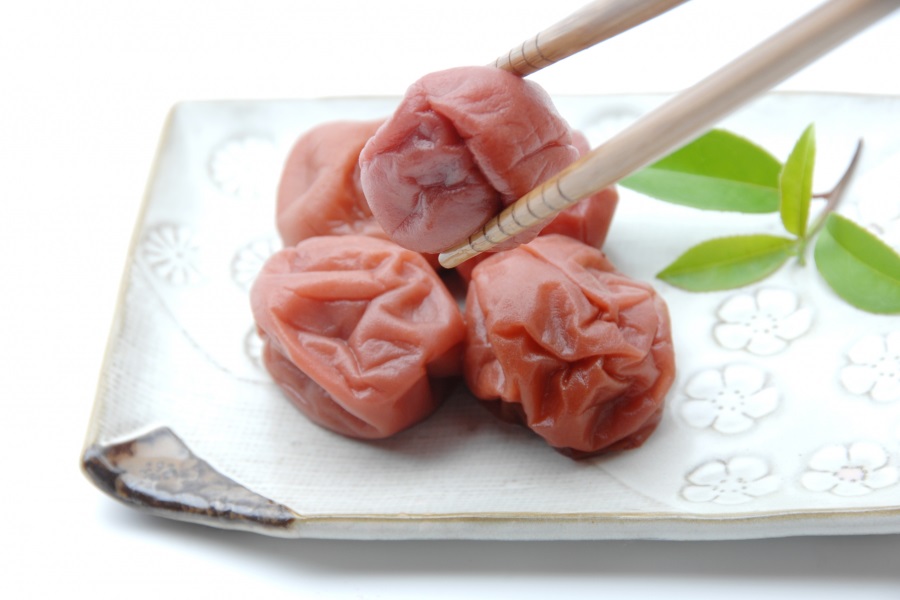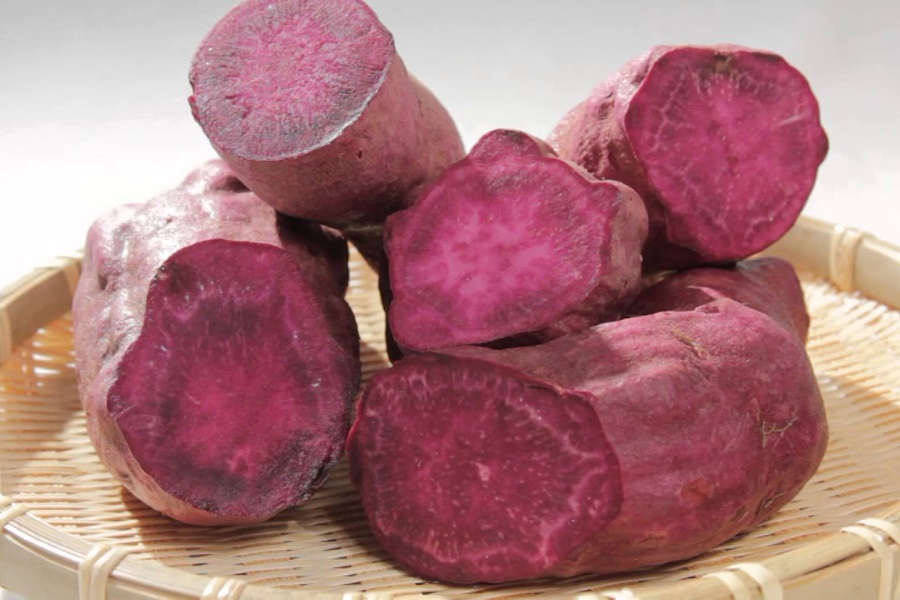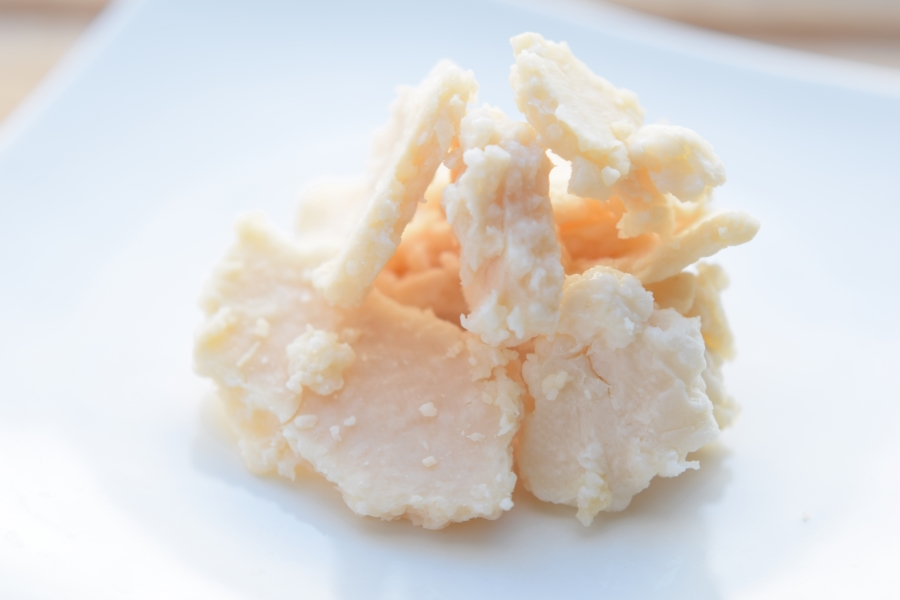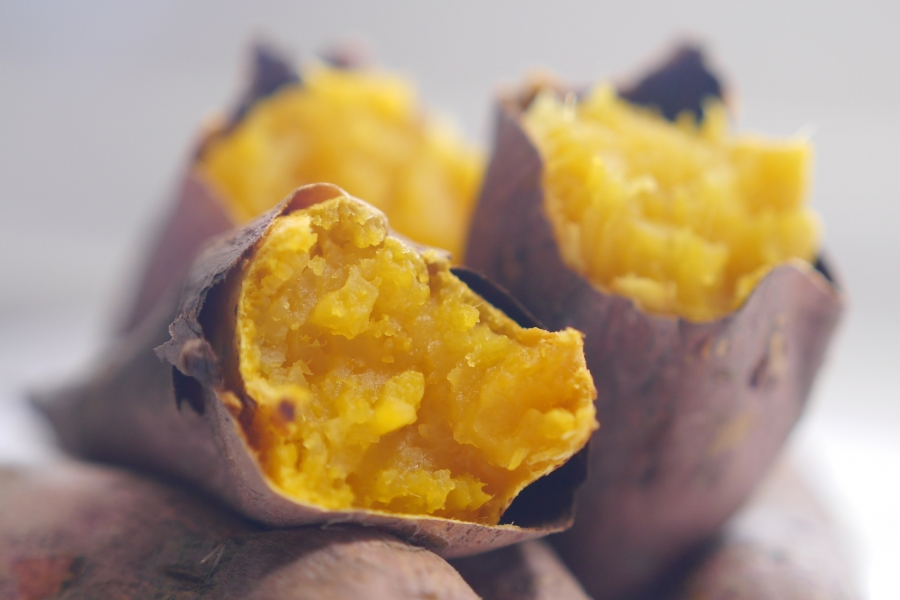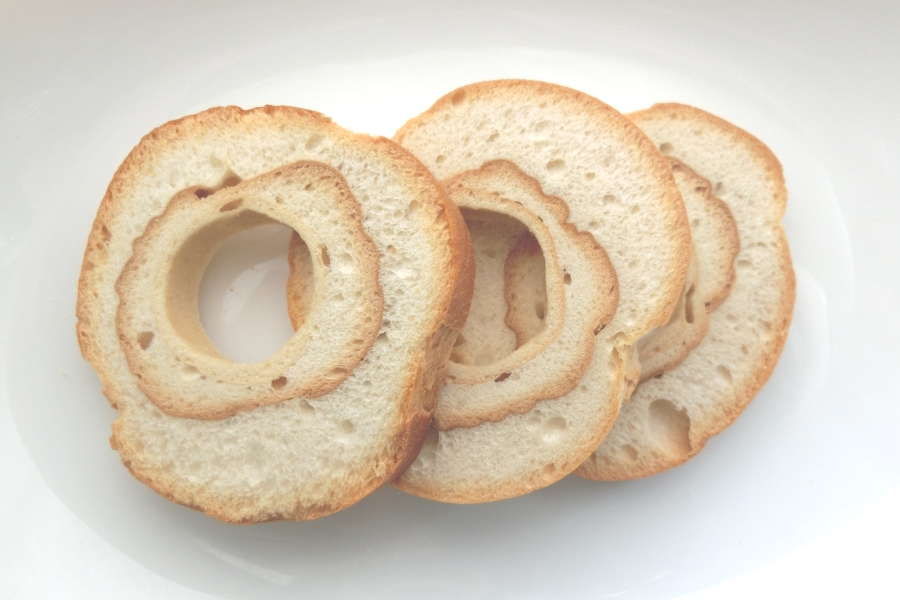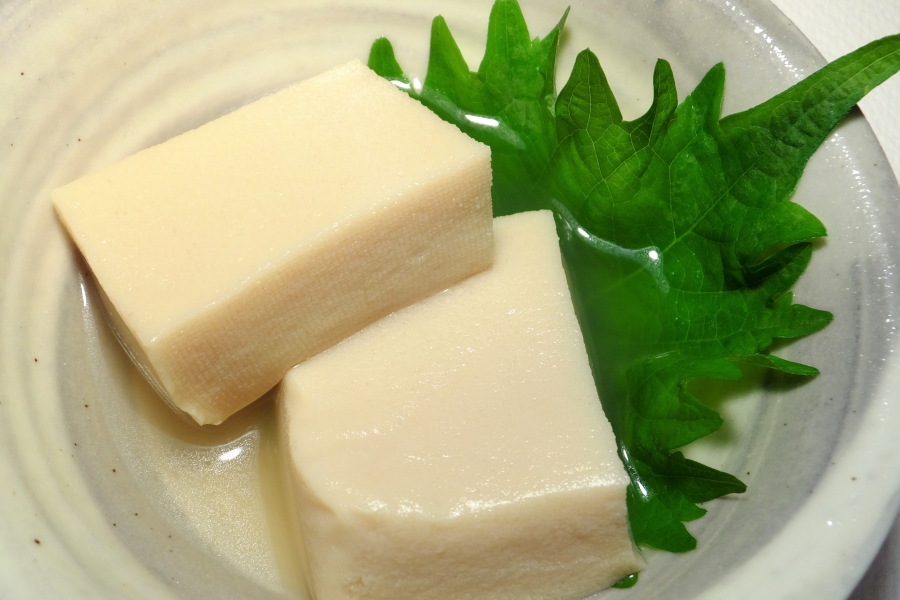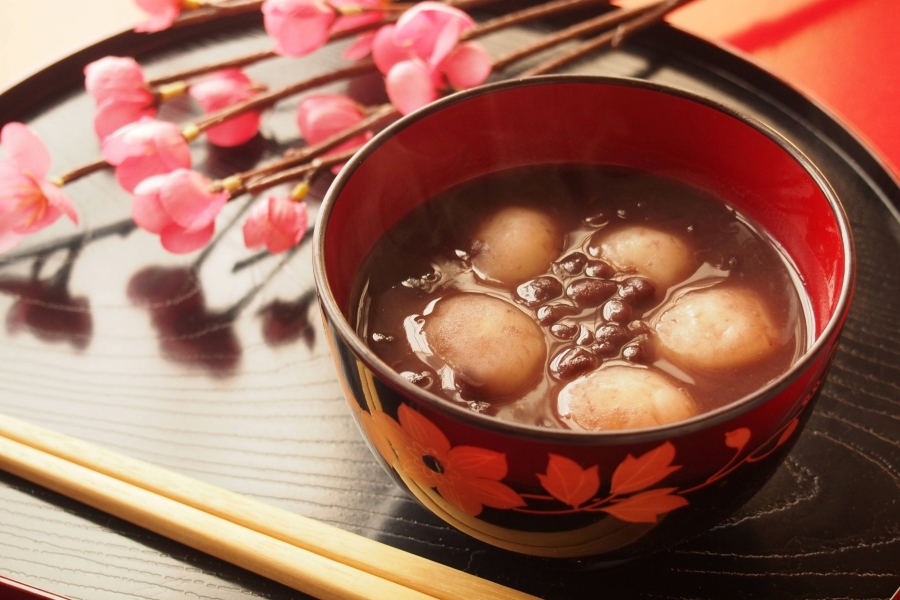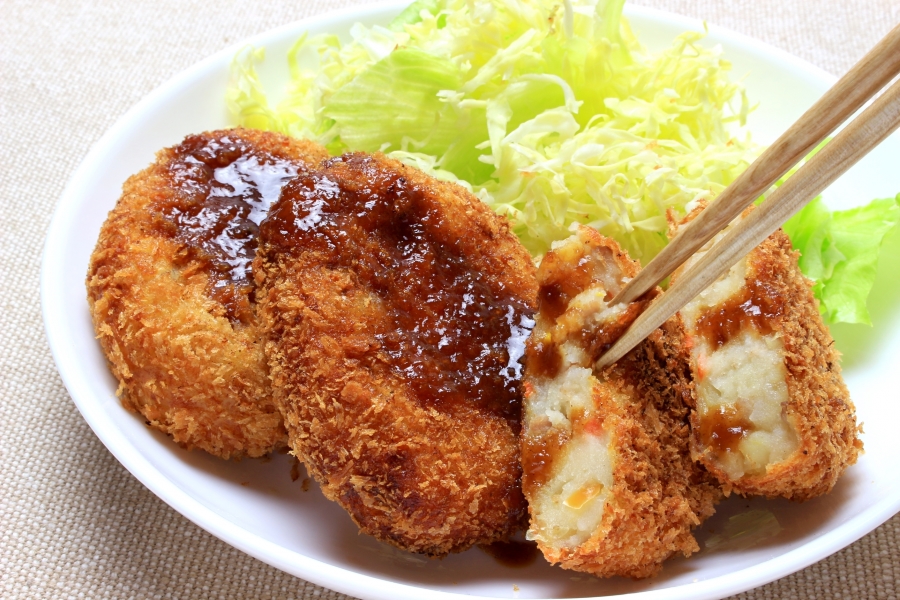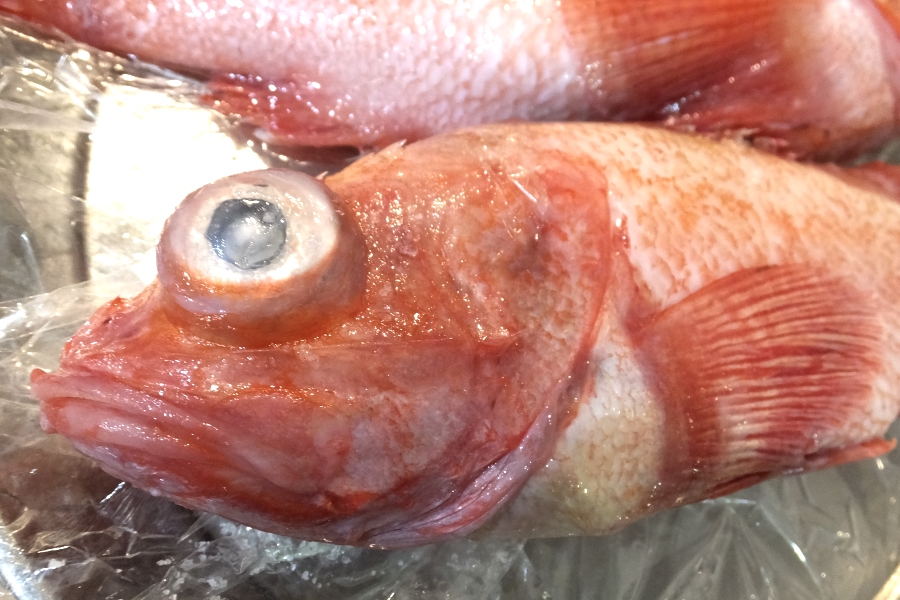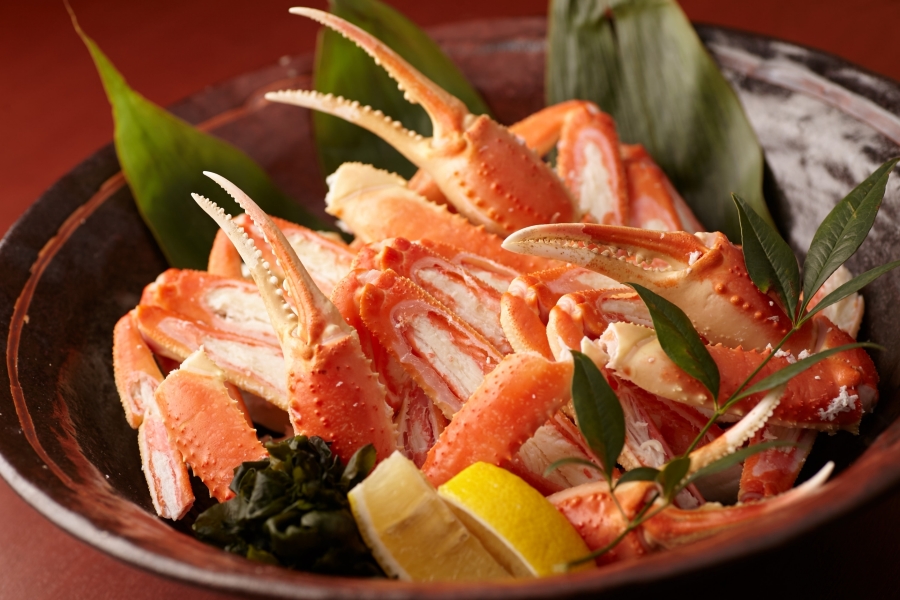Mirin kasu is born from the brewing process of mirin (sweet sake) and is made of sweet rice, malted rice, and shochu. The sweet rice gives it stickiness and a granulated drop shape. The flavor of mirin kasu is faintly sweet, as distinguished from the stronger taste of sake kasu. Contents: What is Mirin Kasu? Mirin Kasu Pickled Vegetables Recipe Mirin Kasu Pound Cake Recipe Baked Cod with Mirin Kasuzuke Recipe Soymilk Banana Shake with Mirin Kasu Recipe Crispy Mirin Kasu Cookie Recipe What is Mirin Kasu? History of Mirin Kasu As described in the book “Wakan Sansai Zue” (Chinese and Japanese All things Encyclopedia) from the rnid-Edo Period, mirin kasu has been consumed since long ago as a “sweet […]
Contents: Kinds of Traditional Japanese Multicourse Meal What is Kaiseki Course 1. Sakizuke – starters, appetizers 2. Wanmono – Osumashi (clear soup) with many kinds of ingredients 3. Mukouzune – Sashimi, Otsukuri 4. Hachizakana – Yakimono (grilled dishes) 5. Shiizakana – mainly for Sakana (side dishes for sake), may be replaced with Azukebachi (nimono, or simmered dishes) 6. Agemono (deep-fried dishes) 7. Tomezakana (a small dish before rice course) – Suzakana (sunomono – vinegar salads) or Aemono (dressed foods), Chinmi (delicacies) 8. Shokuji – Gohan (rice dishes) 9. Mizugashi – fruits Kinds of Traditional Japanese Multicourse Meal The traditional Japanese multicourse meal can broadly be categorized into the following forms: kaisekiryori, served before a tea ceremony (tea kaiseki); honzen-ryori, served […]
Wasabi is an essential accompaniment to nigiri sushi and sashimi. The wasabi plant is a spicy aromatic vegetable associated with Japanese food. The sharp taste clears our sinuses in a way that is different from the spiciness of chili or pepper. Called “wasabi” in English as well, wasabi spread widely in the U.S. with the Japanese food boom. It has become an essential condiment and a staple at sushi restaurants. Contents: History of Wasabi Tubed Wasabi is Real Wasabi? Efficacy of Wasabi How to cook Wasabi? What is Wasabi? History of Wasabi Wasabi is a perennial plant of the Brassicaceae family native to Japan. The name first appeared in literature of the Nara period (710-794), and it is believed that […]
Umeboshi, which means pickled plum, is prepared by pickling ume fruit in salt to dry, and then pickling the dried ume in vinegar with shiso leaves. Various types of umeboshi are available, from soft, large ones to crunchy little ones, all having a reddish color. Umeboshi tastes sour on its own, but it has long been a popular side dish in Japan as a perfect accompaniment to rice. With its long history, umeboshi is indeed a traditional Japanese food. Contents: History of Umeboshi Let’s Make Umeboshi What is Doyoboshi? History of Umeboshi Japanese people began making umeboshi during the Heian period (794-1185). As the story goes, a Heian emperor was able to heal himself from an epidemic plague by drinking […]
A New Breed of Murasaki-imo Everyone Is Talking About: “Purple Sweet Road” At Nijiya, you find satsuma-imo shipped directly from Nijiya Farm. As you cut into the deliciously purple skin of this satsuma-imo, you find that the meat is also a beautiful purple color. The vivid purple color is due to B carotene and anthocyanin pigment, which is a type of polyphenol. It sounds good for the body, doesn’t it? Called “Purple Sweet Road,” this particular murasaki-imo (meaning “purple potato” in Japanese) is a new breed of potato registered in 2006. A cross between Naruto-kintoki and murasaki-imo, Purple Sweet Road combines the taste of Kintoki and the nutritional value ofmurasaki-imo. The pretty purple color is one secret of the popularity […]
There are many different types of eggs: There are white-shelled eggs, brown-shelled ones, those with rich, golden yolks or pale-yellow yolks, etc. These differences have nothing to do with their nutritional value. The nutritional value of an egg is determined by the type of feed the hen eats. We recommend eating one or two organic or free-range eggs every day. Contents: Eggs are a healthy food source that offer excellent nutrition Nijiya’s Eggs Japanese Style Egg Recipes Eggs are a healthy food source that offer excellent nutrition Many people believe that brown eggs with deep golden-colored yolks are better in quality and thus higher priced. However, the eggshell and yolk color have nothing to do with their nutritional value. The […]
Contents: What is Breton? Why is duBreton Pork Different? The Amazing Power of Pork-kun! Nijiya’s Recipe Recommendation Japanese Style Pork Recipes What is Breton? The pork sold by Nijiya Market is from “duBreton” and nicknamed “Pork-kun.” You may have noticed this name. “Breton” is, in a way, the family name of our new line of pork. In 1944, Napoleon and Adrienne Breton, who had managed a farm in Quebec, Canada, decided to establish a business that would meet their vision and strong passion for farming. After years of hard work, Aliments Breton Foods Canada, the company they created, gained an important position in the agrifoods industry in Quebec. Thus “duBreton Pork” was born from the untiring efforts of this husband-and-wife […]
Contents: Japanese Dried Vegetables Let’s Make Dried Vegetables! The benefits of dried vegetables Why not try this once you’re familiar with the process! Japanese Dried Vegetables Dried shiitake mushrooms and kiriboshi daikon (dried, shredded daikon radish) certainly come to mind when you think of dried vegetables. They are among the ingredients treasured for their long shelf life and increased nutritional value in dehydrated form. Dried vegetables like these are quietly gaining attention. That is because you can easily make them in a small, sunny space in your garden or on your patio without the need for special tools. The dehydration process removes water content from the vegetables and condenses their natural flavors, so they taste even better than in its […]
Have you noticed a mysterious looking brown item lined up in the pickle section? It looks really strange, and for those of you who have never tried it, its appearance hardly invites you to reach for it. This is a form of pickle called “Narazuke.” Contents: What is Narazuke? Narazuke Recipe What is Narazuke? Narazuke refers to vegetables of the gourd family that are pickled in sake lees. It is said to have originated in the Kansai region of Japan. At one time, it was apparently a very expensive food that only those in the upper class could enjoy. Later, in the Edo period (1603-1868), it came to be widely consumed by the general public. It is said that the […]
Sakekasu is made from steamed rice and kome-koji (rice malt). During the fermentation process that produces sake, the solids, or lees, that remain after the liquid is captured is called sakekasu. Contents: What is Sakekasu? Sakekasu Recipe What is Sakekasu? Sakekasu has health as well as cosmetic applications. It contains protein, carbohydrates, dietary fiber, vitamins, organic acids, and minerals. It also provides folic acid and amino acid peptides, Aspergillus, and yeast-derived β-glucan. Sakekasu may also prevent osteoporosis and constipation and may lower bad cholesterol levels. Since it is said to fight against modern disease, sakekasu is a food that we want to eat routinely. It also has benefits as a skin moisturizer and is widely used as a raw material […]
Kanpyo is an indispensable ingredient in Futomaki (thick-roll) sushi rolls. Although it appears plain and nondescript, being thin and stringy with no body, when you know more about kanpyo, I guarantee that you will love it and want to eat more of it. Contents: What is Kanpyo? How is Kanpyo Prepared? Nutritional Value Preparation Kanpyo Recipes What is Kanpyo? Kanpyo is the shaved flesh of the bottle gourd dried into thin strips. The white, tidy flowers of the bottle gourd bloom on a summer evening and wither overnight. Contrary to this fleeting image, the vines are full of vigor growing as tall as 20 meters, and the flesh is said to grow as big as 6 to 7 kg. (13 […]
Makurazaki City, in Kagoshima Prefecture, is known as Japan’s top producer of katsuobushi (smoked, dried bonito). Our Wafu Dashi stock is made with an abundance of katsuobushi, produced in Makurazaki without the use of chemical seasonings (including MSG), artificial colors, etc. Thus it boasts more savory character (umami), flavor and mellow sweetness that come from quality fish and natural ingredients. In this article we’ll talk about this additive-free Nijiya Wafu Dashi stock. Contents: “Arakibushi” – Makurazaki Brand Katsuobushi Blending Shiitake Mushroom and Konbu Dashi Stock Granular-type Dashi Stock. That’s Easy to Use Dashi Stock Recipes Pork and Onion Stir-Fry with Ginger Recipe Dashi Simmered Nira and Enoki Mashroom Recipe Daikon with Ground Chicken Recipe Lightly Simmered Asari (clams) and Asparagus […]
Contents: The Story of Yakiimo The Birth of Yakiimo Healthy Snack How to Roast Yakiimo Health Benefit of Yakiimo Kinds of Sweet Potatoe The Story of Yakiimo We are amazed at the varieties of yakiimo that have become available in recent years, with their delightful aroma of malt sugar and as sweet and tasty as cake. Improvements in the breeding of sweet potatoes, advancements in cultivation, curing, and storage technologies, and extensive research in roasting are behind the evolutionary changes of yakiimo. The traditional types of yakiimo include potatoes roasted to the smooth, slightly dry texture favored in Kanto and those with the softer, moister texture eaten in Kansai and the south. With the availability of Naruto Kintoki, Beni Haruka, […]
Contents: What is Kasuzuke? Selecting Additive-Free, Wild-Caught Fish The Right Way to Make Delicious Kasuzuke Kasuzuke and Health Nijiya’s Seacret Kasuzuke Recipe What is Kasuzuke? The method of using such wild yeast as malted rice to treat fresh seafood may be unique to Japanese cuisine. Among all fish dishes, the exquisite kasuzuke is an indispensable dish in Japanese meals. Kasuzuke adds a distinctive flavor to fish while removing its fishy odor. The rare, sophisticated taste and excellent nutritional value of kasuzuke are now attracting food lovers throughout the world. In Japan, the harvest season for new rice crops is the time when the brewing of new sake begins. When the sake brewing is nearly complete, fresh sake kasu (sake lees) […]
Himono refers to a method of food preservation that has existed since the Jomon Period (14,000-300 BC). This method is excellent and convenient as it allows many types of fish to be preserved for consumptions all year round. Himono values the process of “drying” where the umami of the fish is extracted by exposure to the sun’s rays. Contents: The History of Himono Nutrients of Himono Himono Recipes Himono Ratatouille Recipe Himono-no-Sunomono Recipe Himono Mixed with Grated Daikon Recipe Chirashi Sushi with Himono Recipe Fried Dried Fish Recipe The History of Himono Sakana-no-himono is now widely available in the supermarket. The method of preserving fish as himono has apparently been practiced since the Jomon Period (14,000-300 BC): fossils of dried […]
The best way to start your day is to have a good breakfast. A healthy, delicious diet will help you maintain stamina and enthusiasm. Contents: Why is Breasfast Necessary? Breakfast and Dieting Let’s Eat a Healthy Breakfast Rice Recommendations Recipes of Pre-cooked Dishes for Japanese-Style Breakfast Why is Breakfast Necessary? Because adults and children are so busy in today’s world, many leave home in the morning without breakfast. However, breakfast isn’t just to satisfy hunger. It has a much more important role. A person’s temperature fluctuates throughout the day, declining after about 9 p.m. to enter a resting state for the brain and body. This means that your body temperature is at its lowest point as you wake up in […]
Contents: What is Satsuma Age? Secrets to Satsuma Age Taste Satsuma Age Recipes Satsuma Age and Shrimp Saute Recipe Satsuma Age Oden Recipe Satsuma Age and Shungiku Nibitashi Recipe What is Satsuma Age? It is said that Satsuma-Age was first made over 160 years ago in Okinawa. Fried fish was known as “Chikiagi” and spread to Kagoshima. From Kagoshima it spread all over the country and has different names in different parts of Japan. Generally, it is called “Satsuma Age” (fish cake) in Eastern Japan and is considered a form of “tempura” in Western Japan. Satsuma age has as much protein as an egg. Furthermore, its fish protein is of better quality than that of meat. It also includes plenty […]
Contents: Fascinating Facts About Fu History of Fu A Variety of Fu Enhance The Flavor of Your Everday Dishes! Eat Fu to Stay Healthy Fu Recipes Dashimaki Tamago (Japanese Rolled Omlete) Recipe Kuruma-fu no Nimono (Simmered Kuruma-fu Dish) Recipe Fu Chanple (Stir-fried fu) Recipe Fascinating Facts About Fu Fu is not bread, nor is it a cracker. It isn’t a snack food, nor is it a staple food. Although it is made from wheat flour, you don’t see fu in the flour-consuming nations of Europe or North America. Fu is a uniquely Japanese specialty. Just like koyadofu (freeze-dried tofu), miso (fermented soybean paste), katsuo-bushi (dried fish flakes), niboshi jako (dried tiny fish), sushi and soba (buckwheat noodles), there is nothing […]
Contents: What is Gindara? Gindara Recipes Gindara Kasuzuke Recipe Simmered Gindara Nitsuke Recipe Gindara Agedashi (deep-fried gindara) Recipe Yu-an Style Grilled Gindara Recipe Easy Foil-baked Gindara Recipe What is Gindara? Gindara is a relatively expensive fish in Japan. It is known for its soft-textured flesh with high fat content, and it’s an excellent fish for simmering or baking. The best ways to eat gindara are probably kasu-zuke and saikyo-zuke. Cooking gindara by these methods will remove the excess water from the fish and trap the fat content within the fish. Gindara becomes even more flavorful when cooked together with the flavors of sake lees or Saikyo miso. In Japan there are stores that specialize in kasuzuke, and each year trips […]
Zakkoku has become increasingly popular these days. Cooking regular rice with a blend of zakkoku can boost its taste and nutritional value substantially. Eating zakkoku rice can help you feel great and stay healthy every day. Just combine organic brown rice or white rice with a variety of zakkoku. Proper blending is the key to delicious zakkoku rice. Assorted zakkoku packets are also available. Contents: What Is Zakkoku? The Significance of Zakkoku Rice Kinds of Zakkoku Zakkoku Recipe What Is Zakkoku? Zakkoku is a collective term for grains of the grass family that bear small fruit seeds. There are other types of grains with similar fruit seeds that aren’t part of the grass family. These grains are called ruiji zakkoku, […]
Kiriboshi-daikon is daikon (Japanese radish) that has been thinly sliced and sun dried. Bathed in sun, the strips increase in sweetness and nutritional value. Contents: What is Kiriboshi-Daikon? Kiriboshi-Daikon Recipe Kiriboshi-Daikon & Canned Tuna Salad Recipe Light Kiriboshi-Daikon Salad Recipe What is Kiriboshi-Daikon? When compared to the same weight of raw daikon, kiriboshi-daikon contains fifteen times more calcium to strengthen bones and teeth, 32 times more iron to prevent pernicious anemia, and ten times more vitamins B1 and B2 to support metabolism. Because the volume decreases to approximately one tenth when dried, kiriboshi-daikon is a more efficient way to absorb nutrients. As a rich source of dietary fiber, it improves digestion and promotes beautiful skin. Kiriboshi-daikon is effective in weight-loss […]
Contents: Miso Comes in a Variety of Shapes and Forms Moromi-Miso Recipe Miso Comes in a Variety of Shapes and Forms Miso is normally used in soups and/or cooked dishes. However, some types of miso are used alone as a topping for plain-tasting foods, eaten as a snack with drinks, or put on steamed rice. These types of miso are referred to as “okazu miso.” Kinzanji-miso is a wellknown example of okazu miso. Moromi-miso refers to a soft, solid mass where the raw ingredients brewed to make soy-sauce or sake become fermented. Put simply, it is a stage of fermentation prior to becoming soy sauce. To make moromi-miso, the koji (malted rice) made from wheat, soybeans, rice, etc., is fermented […]
Nobody knows who came up with koyadofu first, though it’s certainly a traditional Japanese flavor that dates back to ancient times. Koyadofu is made simply from soybeans, and has long been enjoyed throughout Japan under the names “Shimi-dofu” or “Koyasan-dofu.” It looks just like a hard sponge, and it doesn’t even appear to be edible or fresh. Koyadofu could have been destined to simply die out, but now it is appreciated for its distinctively high nutritional value. Koyadofu is an excellent, storable healthy food that Japan can boast to the world. Its nostalgic taste is now becoming increasingly popular and is soon to emerge as a dynamic influence on modern cooking. Contents: What is Koyadofu? The Nutritional Value of Koyadofu […]
Oshiruko, or zenzai, is one of the desserts we crave during a cold winter. By the way, do you know what the difference is between oshiruko and zenzai? Actually, they both vary depending on the region and can be defined in many different ways. Therefore, when people who are reading this article hear about oshiruko or zenzai as mentioned here, what they’ll picture in their minds may differ according to the part of Japan they call home. Contents: Oshiruko is Excellent Dessert Oshiruko’s Supporting Cast Oshiruko Recipe Fun Recipe of Oshiruko Oshiruko is Excellent Dessert Generally, in the Kanto region a soup dish contammg “bean paste” made of red beans is referred to as shiruko, whereas in the Kansai region […]
Contents: How Do You Want to Make It Today? Potato Croquettes Recipe How Do You Want to Make It Today? You can cook croquettes in various ways, depending on your goal: “time saving,” “best to eat as soon as cooked,”” delicious even when cold,” and “non-fried.” Here are some cooking tips: Choosing the Ingredients Potatoes: Russets or a similar variety, which become fluffy when cooked, work well for croquettes. Generally speaking, waxy potatoes such as Yukon Gold and red potatoes become gluey when cooked, so they’re more suitable for a sinm1ered dish than for croquettes. Onion: The yellow onion is the best cooking onion. Ground meat: Use beef, pork, or a mixture of the two, depending on your preference. Oil […]
Contents: Nijiya’s Nori Tsukudani Nori Tsukudani Recipe Nijiya’s Nori Tsukudani New items added to our popular “Nijiya Small Bottle” series are Nori Tsukudani and Nori Tsukudani with Shiitake. Nori tsukudani is made with simple ingredients-nori seaweed and seasonings; Nori Tsukudani with Shiitake has added shiitake mushrooms. Nori seaweed is rich in protein, vitamins, and minerals. We make it without MSG and thickener so you can feel its natural, smooth texture. Enjoy Nijiya homemade Nori Tsukudani on steamed rice and of course with onigiri (rice balls)! How to Cook Nori Tsukudani (Nori Tsukudani Recipe) Nori Tsukudani Rolled Egg Good for bento menu! Ingredients (Serves 2) 3 eggs 1 Tbsp. Nori Tsukudani Salt and pepper (to taste) Oil (as needed) Cooking Directions […]
Contents: What is Sakura Denbu? How to Cook Sakura Denbu What is Sakura Denbu? Sakura denbu refers to mashed, seasoned fish that is colored light pink with red food coloring. The pink color evokes the blossoms of Japanese cherry trees, called “sakura,” in Japanese. Sakura denbu is mainly used to add color to rice and sushi dishes. It gives off an airy mouth-feel with a lightly sweetened and gentle flavor. Denbu is often mistaken for “oboro,” but oboro uses shrimp and/or salmon. Denbu is soft and fluffy while oboro is crumbly. Either can be used to add color or as a topping for sushi, etc. Though “denbu” is rarely eaten in large quantity, it is indispensable for its role in […]
Contents: Tororo Kombu is one of many processed kombu product Tororo Kombu Recipe Tororo Kombu is one of many processed kombu product There are many types of kombu (=kelp). Despite the fact that kombu is known to be rich in nutrients, many of us use it only for stock because we do not know exactly how else to use it in cooking. Tororo-kombu, also known as shredded kombu, is one of many processed kombu products. It is made from giant kelp and/or Larninaria ochotensis known as “Rishiri-kombu.” Thinly sliced pieces of the kombu are pressed by laminating and cut against the grain into thin strips. In the Hokuriku region, in particular, many varieties of tororo-kombu are available with different ingredients […]
Contents: American Kinki Kinki Recipe American Kinki The kinki (channel rockfish) is in the Scorpaenidae family. The formal Japanese term for it is kichiji, but it appears on the market in Japan under a more popular name: kinki. The fish has become a luxury, as the amount that can be caught in Japan has been reduced in recent years. The delicious kinki however, can also be caught here in America. They make their habitat as far north as Alaska, as well as on the West and East coasts of the continent, and many are exported to Japan. Fatty, frozen kinki from Alaska, as well as those fresh-caught locally, arrive at Nijiya stores. The kinki, among white fish is exceptionally fatty […]
Crab is essential for winter seafood recipes. Everyone agrees that crab is the king of winter flavors. Aren’t you filled with anticipation when you think of hot pot or kani suki (crab hot pot) on a cold winter’s day? Contents: Nijiya Sticks to Raw Crab! Jumbo Snow Crab Red King Crab How to Choose Good Crab Nutrition Value Kani (Crab) Recipes Snow Crab Cream Tomato Pasta Recipe Kani Nabe (Crab Hot Pot) Recipe Crab Rice Recipe Kani Tama Recipe Nijiya Sticks to Raw Crab! Crab in American stores is usually cooked or boiled, but Nijiya purchases raw crab not only to keep the original flavor but also to give our customers greater freedom of preparation. Crab is a seasonal food […]
